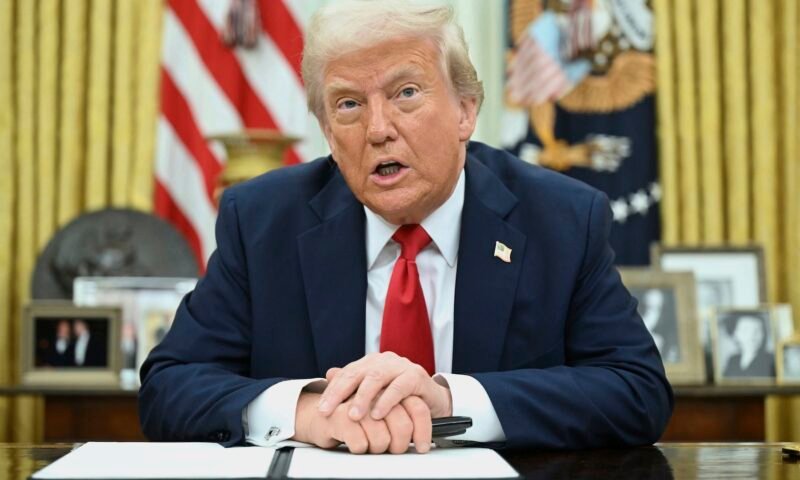

Key points
- The OBBBA Act imposes new borrowing limits on previously unlimited federal programs (Parent PLUS and Grad PLUS), reducing the pool of high-income borrowers in the federal system.
- These new caps effectively funnel these borrowers toward private student loans.
- This shift means that the federal government keeps the historically unprofitable loans, while the more profitable student loans flow to private banks and lenders — reducing the incentive to fully privatize the federal portfolio.
At first glance, the Trump administration’s push to privatize federal student loans may seem like political calculation. But the economic factors behind recent political changes tell a more nuanced story.
Under the One Big Beautiful Bill Act (OBBBA), the administration’s comprehensive higher education and tax package, the federal government is tightening who can borrow and how much through programs like Parent PLUS and Grad PLUS. These loans have long been among the most profitable government loans, often taken out by creditworthy parents in the middle or late stages of their careers, or graduate students pursuing high-paying careers such as medicine and law.
Now, new borrowing limits and the elimination of the Grad PLUS program for future students have changed that dynamic. Families and graduate borrowers who once relied on federal programs for large sums may soon find themselves turning to private lenders instead.
It is a structural shift that accomplishes, in practice, what privatization would have done at the political level: it moves the most profitable borrowers (and the profits that come with them) into the private market, while leaving to the federal government the less profitable parts of the student loan portfolio.
Would you like to save this?
Maximum limits for borrowers begin in 2026
Under the OBBBA, there will be significant changes to federal student loan programs. For example:
- Effective July 1, 2026, the Parent PLUS loan will be capped at $20,000 annually And a A maximum of $65,000 USD over the life of each dependent student. Previously, parents could borrow up to the cost of attendance minus other aid.
- The Grad PLUS loan program for graduate and professional students is being eliminated for new borrowers, and in its place are new limits on direct graduate loans. $20,500 per year and $100,000 for life For most graduate students, up to $50,000 per year and $200,000 for life For professional programs such as law or medicine.
- At the same time, federal repayment options are narrowed and protections for new loans are reduced. Parent PLUS loans can only be repaid under the Standard plan, while recent graduate loans will only have access to the Standard or New Repayment Assistance Plan.
In other words: After July 2026 for new borrowers, parents and graduate students will face stricter federal borrowing requirements. For parents specifically, there will be no path to Public Service Loan Forgiveness (PSLF).
Where private lenders benefit
Here comes the role of economics. Historically, Parent PLUS and Graduate PLUS loans have been among the most profitable segments of the federal student loan portfolio.
In 2024, the government would make $2.76 for every $100 in student loans you lent in PLUS Loans. This was the only portion of the portfolio that was profitable (and the overall student loan portfolio lost $19.64 for every $100 loaned). In 2018, Parent PLUS loans were making over $30 for every $100 lent.
With the new caps in place, the federal government is doing so intentionally Shrink Exposure to these most profitable borrowers.
So the logic goes: Parents who need more than the new limits will turn to private student loans.Likewise, graduate students in expensive professional programs will seek private loans if the federal limits are lower than what they need.
As we have said before: “This shift may lead to an increase in the use of private loans among graduate students, especially in areas with high tuition fees” under the OBBBA.
From a policy perspective, this means that the government is shifting its pivot: it keeps the higher-risk, low-return loans at home (under federal programs) and pushes the lower-risk/higher-return business to private lenders.
Why does this reduce the push for full privatization?
While the Trump administration has talked about getting out of the student loan business altogether and letting private lenders take over — the “baby steps” in OBBBA make that outcome less desirable for banks.
The law limits how much the government can lend to the types of borrowers who typically repay their loans in full, such as parents on fixed incomes or graduate students who become doctors and lawyers. These borrowers are often the most profitable for lenders.
Because the government is lending to them less, banks and private lenders can step in to make those loans instead. This means that “good businesses” – borrowers who are more likely to pay what they owe – automatically move over to the private side.
What remains in the federal system are loans that make less money (and actually lose money) or carry more risk, such as loans to undergraduates or low-income students. The government holds these loans mostly for public reasons, to make sure college stays affordable for families who can’t easily borrow from a bank.
So the government does not need to sell or privatize the entire loan program. It has already reduced the profitable part of it through policy and allowed private lenders to naturally dominate this area. Banks only really want profitable loans – they don’t want to have loans that lose money or require more paperwork/overhead to maintain.
Implications for consumers and families
For families considering borrowing in 2026 and beyond, the implications are significant. A parent who was able to borrow up to the cost of attendance through Parent PLUS can now reach a lifetime maximum of $65,000.
But now, Parent PLUS versus private loans have changed — making private loans even more compelling if you can beat the interest rate offered by Parent PLUS loans.
For graduate students in expensive programs (medicine, law, dentistry, etc.), eliminating Grad PLUS means their federal borrowing limits may be less than the cost of attendance. This gap directs them to private markets as well.
Whether this shift is intentional or accidental, the reality is that more high-income borrowers may end up taking out private loans (which means more profits for banks and potentially more risk for borrowers) while the federal system retains a larger share of less profitable borrowers overall.
The result is that banks increase their profits on student loans, the federal government keeps the less profitable loan segments, and overall there is less incentive to privatize the broader loan system.
Don’t miss these other stories:
Trump administration resumes student loan forgiveness programs
37% of Google AI Finance answers are inaccurate in 2025
AI still fails to forgive student loans
Editor: Colin Greaves
The post New Federal Student Loan Limits Shift Bad Loans to Private Lenders appeared first on The College Investor.



